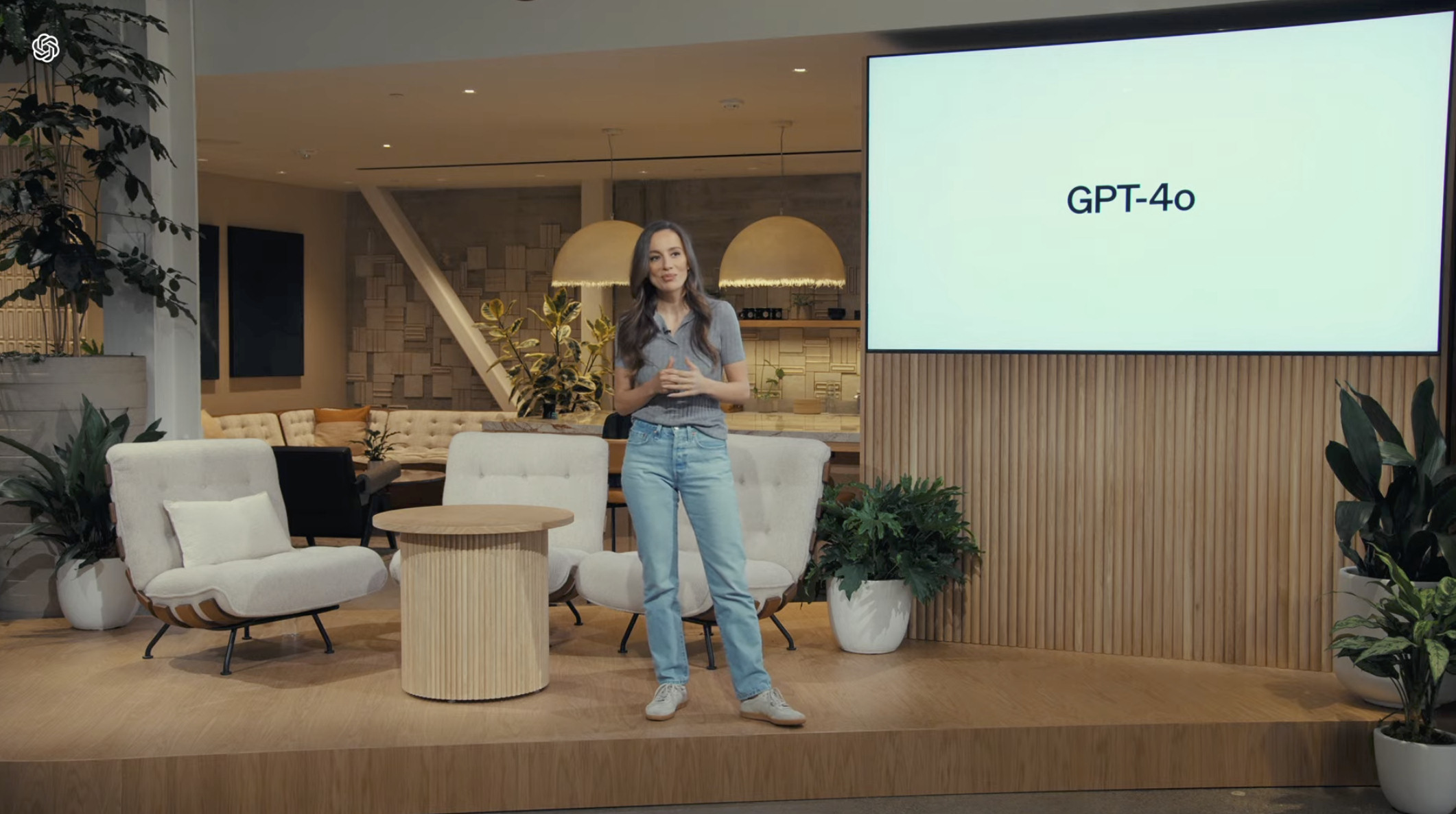On Monday, OpenAI debuted GPT-4o (o for "omni"), a major new AI model that can ostensibly converse using speech in real time, reading emotional cues and responding to visual input. It operates faster than OpenAI's previous best model, GPT-4 Turbo, and will be free for ChatGPT users and available as a service through API, rolling out over the next few weeks, OpenAI says.
OpenAI revealed the new audio conversation and vision comprehension capabilities in a YouTube livestream titled "OpenAI Spring Update," presented by OpenAI CTO Mira Murati and employees Mark Chen and Barret Zoph that included live demos of GPT-4o in action.
OpenAI claims that GPT-4o responds to audio inputs in about 320 milliseconds on average, which is similar to human response times in conversation, according to a 2009 study, and much shorter than the typical 2–3 second lag experienced with previous models. With GPT-4o, OpenAI says it trained a brand-new AI model end-to-end using text, vision, and audio in a way that all inputs and outputs "are processed by the same neural network."
"Because GPT-4o is our first model combining all of these modalities, we are still just scratching the surface of exploring what the model can do and its limitations," OpenAI says.
During the livestream, OpenAI demonstrated GPT-4o's real-time audio conversation capabilities, showcasing its ability to engage in natural, responsive dialogue. The AI assistant seemed to easily pick up on emotions, adapted its tone and style to match the user's requests, and even incorporated sound effects, laughing, and singing into its responses.







I gave it each of my animals and their feeding schedules (with reptiles it can be Monday/Sunday, First Sunday, etc) all of which it understands and reasons about perfectly! It has added my pets and their feeding schedule to it's memory however when asked "Do I feed any of my pets today?" it consistently gets THE CURRENT DAY wrong, and gives the wrong answer.
I have insisted that it add a memory to always Search and check the correct day before giving a feeding schedule - sometimes it does do a search - and ignores the answer, providing the wrong date.
---
I was actually thinking it wouldn't achieve it, despite the hang up being so simple.. GPT4o is actually 5/5 on this test~! One time it actually wrote a Python script to get the correct date before answering! What a good little rule follower. =]